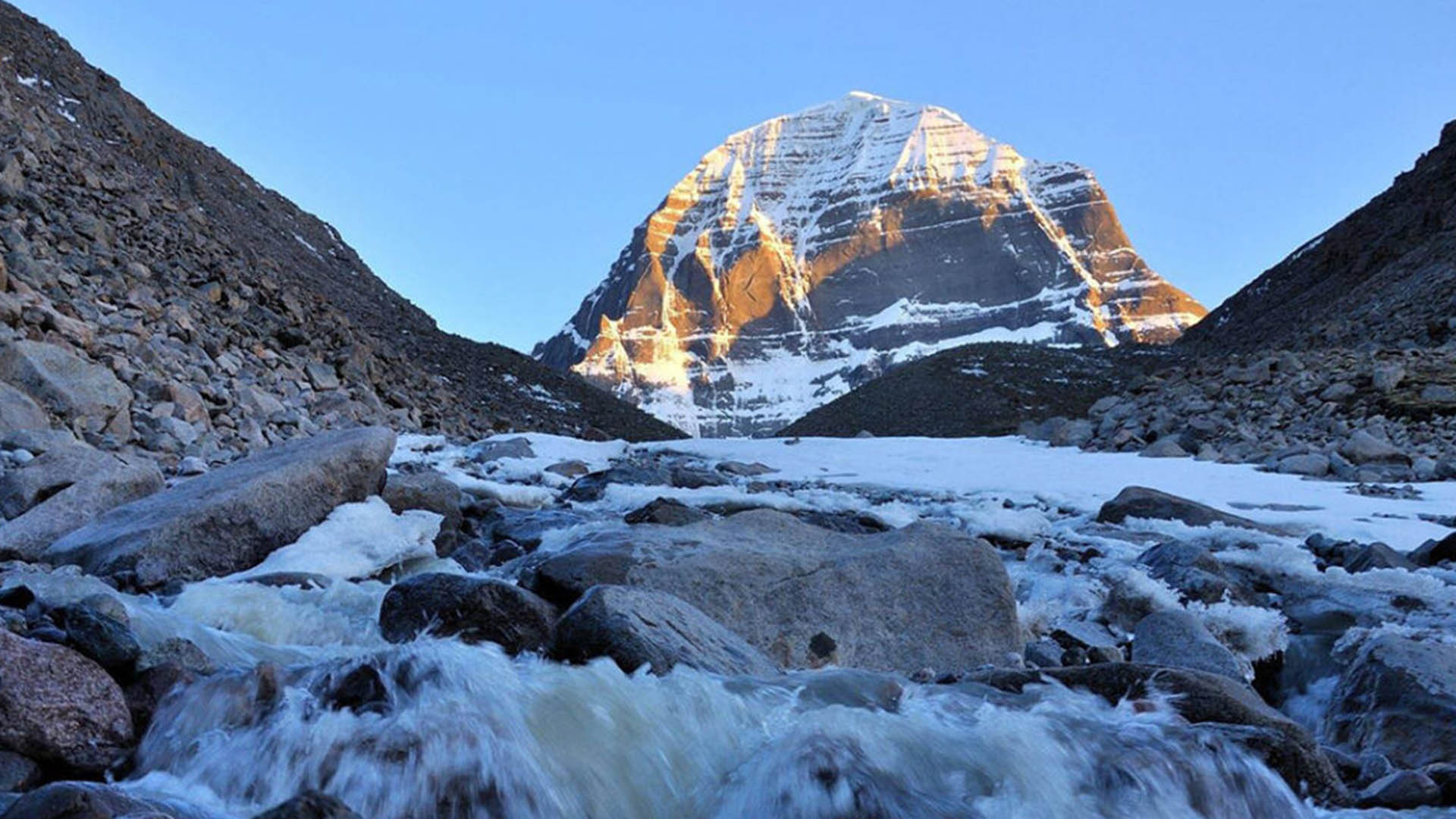Places To Visit Near Kailash Mansarovar Yatra
The region surrounding Mount Kailash and Lake Mansarovar is imbued with spiritual significance and natural beauty, offering pilgrims and travelers an array of captivating attractions to explore. From sacred sites to breathtaking landscapes, here's an extensive guide to the places worth visiting near Kailash Mansarovar Yatra.
Mount Kailash
Rising majestically to an elevation of 21,778 feet above sea level, Mount Kailash stands as an icon of spiritual pilgrimage. Nestled amidst the Himalayan ranges in southwestern Tibet, this revered peak is not only one of the world's highest points but also holds deep significance in Hinduism, Buddhism, Jainism, and Bon traditions. Its spiritual aura draws pilgrims from around the globe, seeking blessings and enlightenment in its divine presence.
Kailash Parikrama
Embarking on the sacred circumambulation of Mount Kailash, known as Kailash Parikrama, is a profound journey undertaken by devout pilgrims. Spanning a distance of 53 kilometers, this circumambulation is believed to purify one's soul and absolve sins. The arduous trek, typically completed over three days, presents pilgrims with physical challenges and spiritual revelations amidst the awe-inspiring landscape of the Himalayas.
Nandi Parvat
Nandi Parvat, shaped in resemblance to the sacred bull Nandi, is believed to be the abode of Lord Shiva's divine vehicle. Situated in close proximity to Mount Kailash, this spiritual site holds significance for devotees who seek blessings and communion with the divine. Pilgrims often visit Nandi Parvat to offer prayers and pay homage to Lord Shiva, experiencing a profound sense of spiritual connection amidst the tranquil surroundings.
Muktinath Temple
Located at the foot of the Thorong La mountain pass in Mustang, Nepal, Muktinath Temple is revered as a sacred pilgrimage site for both Hindus and Buddhists. Dedicated to Lord Vishnu, this ancient temple is one of the 108 Divya Desams and is believed to bestow liberation (moksha) upon devotees who visit and offer prayers. The temple's serene ambiance and breathtaking mountain backdrop create a spiritually uplifting experience for pilgrims seeking divine blessings.
Tirthapuri
Nestled northwest of Mount Kailash along the banks of the Sutlej River, Tirthapuri is renowned for its natural hot springs and the Tirthapuri Monastery. Pilgrims visiting this sacred site often partake in the ritualistic bathing in the healing waters of the hot springs, believed to possess purifying and rejuvenating properties. The Tirthapuri Monastery, dedicated to Padmasambhava and Yeshe Tsogyel, serves as a center for spiritual practices and offers a serene retreat for meditation and contemplation.
Gauri Kund
En route to Kailash Parvat lies Gauri Kund, a serene lake revered for its significance in Hindu mythology. According to legend, Goddess Parvati bathed in the pristine waters of Gauri Kund to regain her son Lord Ganesha. Pilgrims visiting this sacred site often seek solace and spiritual purification by bathing in the tranquil waters, believing it to cleanse the soul of impurities and sins.
Yam Dwar
Yam Dwar, also known as the "Gateway of the God of Death," marks the starting point of the circumambulation of Mount Kailash. Situated at an elevation of approximately 15,500 feet, this sacred gateway holds immense significance in Hindu and Tibetan Buddhist traditions. Pilgrims pass through Yam Dwar as they commence their journey towards the sacred abode of Lord Shiva, embarking on a spiritual pilgrimage of self-discovery and enlightenment.
Asthapad
Asthapad, located near Mount Kailash, holds profound significance in Jainism as the place where Rishabhanatha, the first Tirthankara, attained spiritual liberation. Pilgrims visiting Asthapad seek spiritual enlightenment and liberation from the cycle of birth and death, drawn by the sacredness of this ancient site. Surrounded by natural beauty and tranquility, Asthapad offers pilgrims a sanctuary for meditation and introspection amidst the majestic Himalayan landscape.
Siwasthal
Siwasthal, situated en route to the Dolma-La Pass, holds symbolic significance as a replication of the funeral ground in Bodh Gaya, Bihar. Pilgrims visiting this site undergo a metaphorical death and spiritual rebirth, symbolizing the journey of the soul towards enlightenment and liberation. Offerings made by pilgrims, ranging from clothes to personal belongings, serve as symbols of devotion and surrender to the divine.
Rakshas Tal (Lake Rakshastal)
South of Mount Kailash lies Rakshas Tal, also known as the "Lake of Demon," steeped in mythological lore and spiritual symbolism. According to Hindu scriptures, this picturesque lake is associated with the legendary king Ravana's penance, adding to its mystical allure. Pilgrims visiting Rakshas Tal often contemplate the duality of light and darkness, symbolized by its crescent shape juxtaposed with the round sun-like shape of Lake Mansarovar.
Tarboche
Tarboche, a prominent flagpole standing on Mount Kailash, serves as a focal point for spiritual ceremonies and rituals. Adorned with colorful Tibetan prayer flags, it symbolizes the aspirations and prayers of devotees seeking blessings and divine intervention. The annual Saga Dawa festival, celebrated at Tarboche, commemorates significant events in Tibetan Buddhist tradition and draws pilgrims from far and wide to participate in the sacred rituals and festivities.
In conclusion, the region surrounding Kailash Mansarovar offers a rich tapestry of spiritual heritage and natural beauty, inviting pilgrims and travelers to embark on a transformative journey of self-discovery and enlightenment. Each of these sacred sites holds its own unique significance, contributing to the profound spiritual experience of the Kailash Mansarovar Yatra.

Comments
Post a Comment